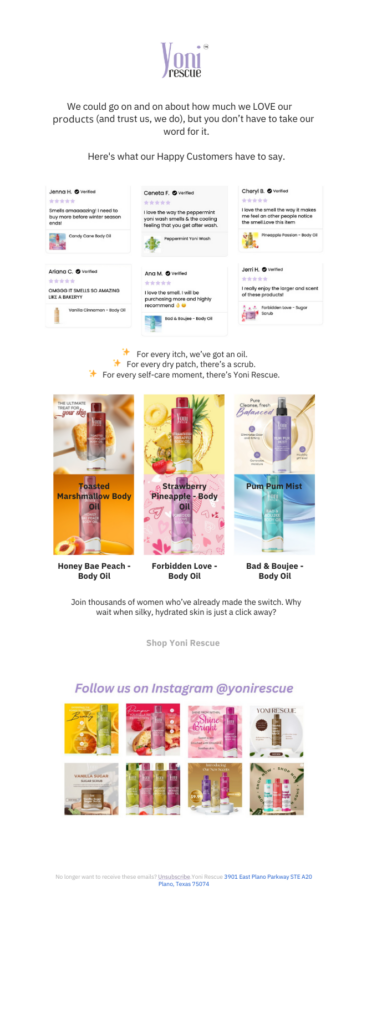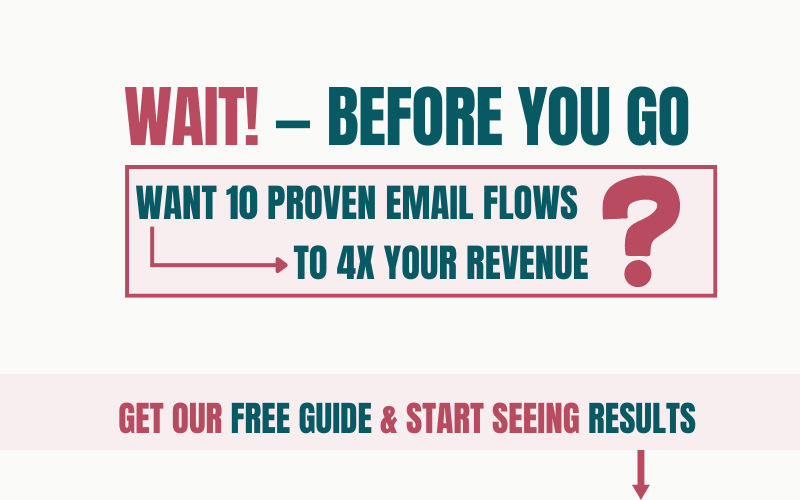Email marketing is often seen as a numbers game, but what if the secret to success isn’t in the number of emails sent, but in the strategy behind them? For one of our clients, a carefully crafted email strategy transformed their revenue from a modest $400 per email to $608 per email, ultimately bringing in almost $3,000 in just three weeks—all without sounding salesy or pushy.
This case study dives into the key elements that made this campaign successful, from audience segmentation to personalization, trust-building, and strategic experimentation.
The Challenge: Low Revenue, Untapped Potential
Before we stepped in, our client was generating around $400 from a single email campaign. While not terrible, it was far from the revenue potential we saw for their brand. The main challenges were:
❌ Lack of a structured email marketing strategy
❌ Minimal audience segmentation
❌ Generic, uninspiring email content
❌ Absence of trust markers (testimonials, reviews, or guarantees)
❌ Low engagement from past subscribers
Our goal was to revamp their email marketing approach, personalize communication, and create compelling campaigns that resonated with their audience.
The Strategy: Smart Segmentation, Experimentation & Emotional Copy
1. Audience Segmentation & Experimentation
Instead of blasting the same message to all subscribers, we segmented the audience based on:
– Purchase history
– Engagement levels (highly engaged vs. dormant subscribers)
– Browsing behavior
– Product preferences
We didn’t rely on traditional segmentation rules alone. We experimented continuously, adjusting and fine-tuning segments based on how each performed. The result? We identified our best-performing segments, which significantly increased engagement and conversions.
Quick Tip: Don’t be afraid to test new audience segments! Experimenting is the key to discovering high-performing customer groups.
2. Personalization & Non-Salesy Language
We knew that customers don’t want to feel like they’re constantly being sold to, so we ditched the traditional sales pitch. Instead, we focused on:
– Conversational, emotional language that felt more like a friend’s recommendation than a corporate sales email.
– Understanding customer pain points and weaving them into the email copy.
– Product suggestions based on customer needs rather than just promoting random products.
Each email had a unique concept, whether it was addressing a common customer problem, telling a relatable story, or offering a tailored product recommendation.
Quick Tip: Speak to your audience’s emotions by showing them how your product solves their problem instead of pushing for sales.



3. Using Trust Markers to Nudge Purchases
Customers are more likely to buy when they trust a brand. To build that trust, we strategically incorporated:
✅ Testimonials from happy customers
✅ Star ratings and reviews on featured products
✅ Social proof
Each email had at least one trust-building element to reassure customers they were making a good decision.
Quick Tip: People trust people. Show real reviews, real experiences, and real results.
The Results: Increased Revenue & Higher Engagement
After three weeks and nine strategically crafted emails, the results spoke for themselves:
✅ Total revenue generated: $2,976
✅ Increase in per-email revenue: From $400 to $608
✅ Higher open rates & click-through rates due to personalization and engaging copy
✅ More customer trust and brand loyalty thanks to testimonials and authentic messaging


This wasn’t just about selling more—it was about building relationships with customers, understanding their needs, and communicating in a way that felt natural and engaging.
Key Learnings
✅ Experimentation is Everything – Don’t stick to rigid segmentation rules. Keep testing different segments to find the most profitable ones.
✅ Personalization Works Wonders – The more relevant and tailored your emails are, the higher your engagement and conversions.
✅ Trust Sells – Adding testimonials, reviews, and social proof can significantly increase sales.
✅ Conversational Copy Outperforms Salesy Language – Customers don’t want to feel like they’re being “sold” to. A friendly, relatable tone works best.
✅ Diverse Email Strategies Prevent Fatigue – Mixing different types of emails keeps your audience engaged and interested.
Final Thoughts
This case study proves that email marketing is more about quality emails than quantity. By focusing on personalization, emotional connection, and trust-building, we transformed this client’s email marketing into a revenue-driving machine.
For brands looking to improve their email marketing strategy, the key takeaway is this: Experiment, personalize, build trust, and engage your audience with content that truly resonates.
It’s time to ditch the generic campaigns and start sending emails that matter. Let’s chat and create an email strategy that drives real results!
Sign up for our newsletter to stay updated with these trends.


